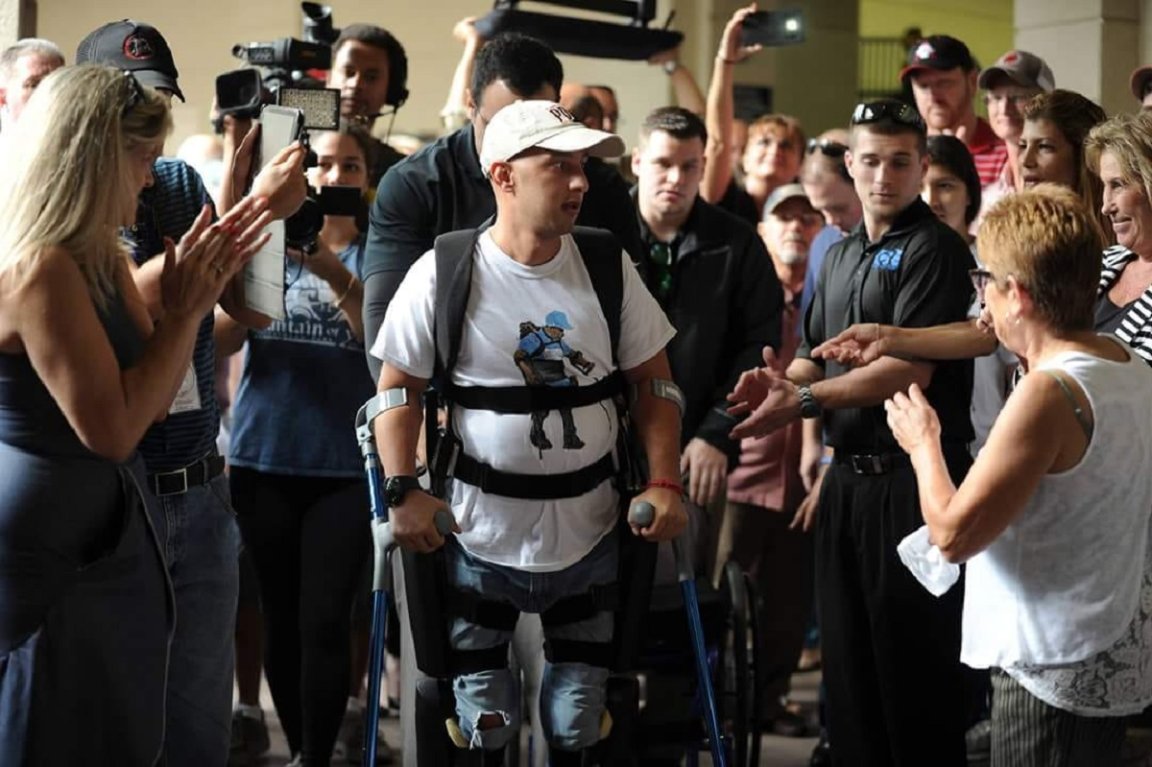
A former jockey who was left paralyzed from the waist down after a horse riding accident was able to walk again thanks to a cutting-edge piece of robotic tech: a $100,000 ReWalk Personal exoskeleton.
When one of its small parts malfunctioned, however, the entire device stopped working. Desperate to gain his mobility back, he reached out to the manufacturer, Lifeward, for repairs. But it turned him away, claiming his exoskeleton was too old, 404 media reports.
“After 371,091 steps my exoskeleton is being retired after 10 years of unbelievable physical therapy,” Michael Straight posted on Facebook earlier this month. “The reasons why it has stopped is a pathetic excuse for a bad company to try and make more money.”
According to Straight, the issue was caused by a piece of wiring that had come loose from the battery that powered a wristwatch used to control the exoskeleton. This would cost peanuts for Lifeward to fix up, but it refused to service anything more than five years old, Straight said.
“I find it very hard to believe after paying nearly $100,000 for the machine and training that a $20 battery for the watch is the reason I can’t walk anymore?” he wrote on Facebook.
As this infuriating case shows, advanced medical devices can change the lives of people living with severe disabilities — but the flipside is that they also make their owners dependent on the whims of the devices’ manufacturers, who often operate in ruthless self-interest.
In some cases, these companies can shut down entirely, leaving a patient stuck with proprietary tech that needs specialized software or hardware to maintain. One man, for example, was forced to spend enormous amounts of time and effort to teach himself how to repair a device that managed his debilitating cluster headaches, after the company that made it went belly up. Others lost their sight when the manufacturer of a bionic eye stopped supporting the devices.
That some of these manufacturers can come and go isn’t the point, though. As 404 notes, the issue is the nefarious practices that many of them use to make their devices difficult to fix without their help.
In absence of strong regulations called right to repair laws, manufacturers aren’t obligated to share the specialized parts, tools, and guides that make third party repairs possible. In the tech world, Apple is particularly notorious for its hostility towards using aftermarket parts to repair its devices. Some manufacturers will go as far to lean on people who share independently created repair guides for their products.
“This is the dystopian nightmare that we’ve kind of entered in, where the manufacturer perspective on products is that their responsibility completely ends when it hands it over to a customer,” Nathan Proctor, head of the right to repair project at the US Public Interest Research Group, told 404. “That’s not good enough for a device like this, but it’s also the same thing we see up and down with every single product.”
“People need to be able to fix things, there needs to be a plan in place,” he added. “A $100,000 product you can only use as long as the battery lasts, that’s enraging.”
Fortunately, Lifeward eventually capitulated and Straight was able to get his exoskeleton repaired — but that was only after an intense campaign in which he went on local TV, got highlighted in a horse industry publication, and gained steam on social media. If it weren’t for that, he could still be struggling to find a way to get his mobility back again.
More on exoskeletons: New Pair of Pants Has a Built-In Powered Exoskeleton